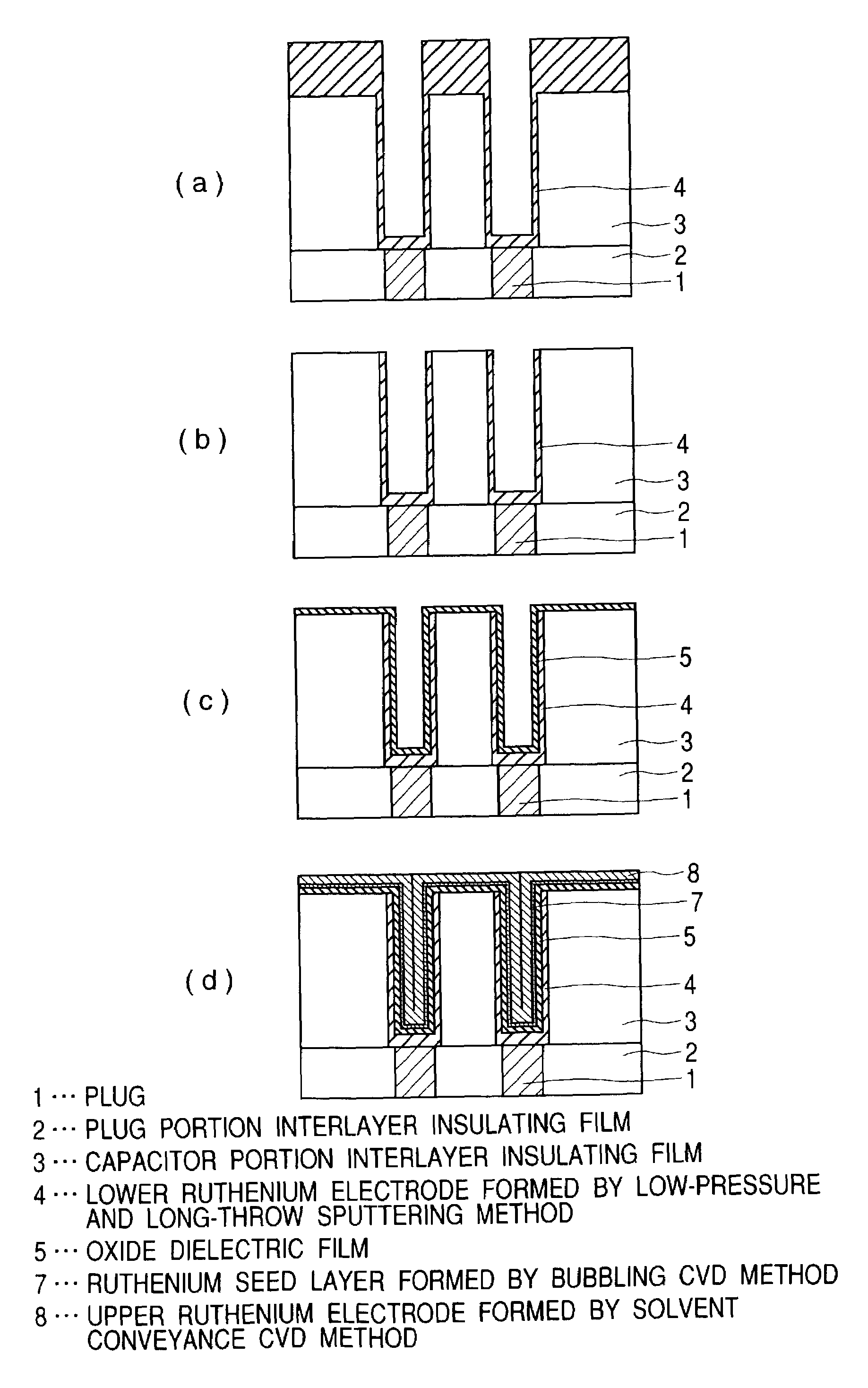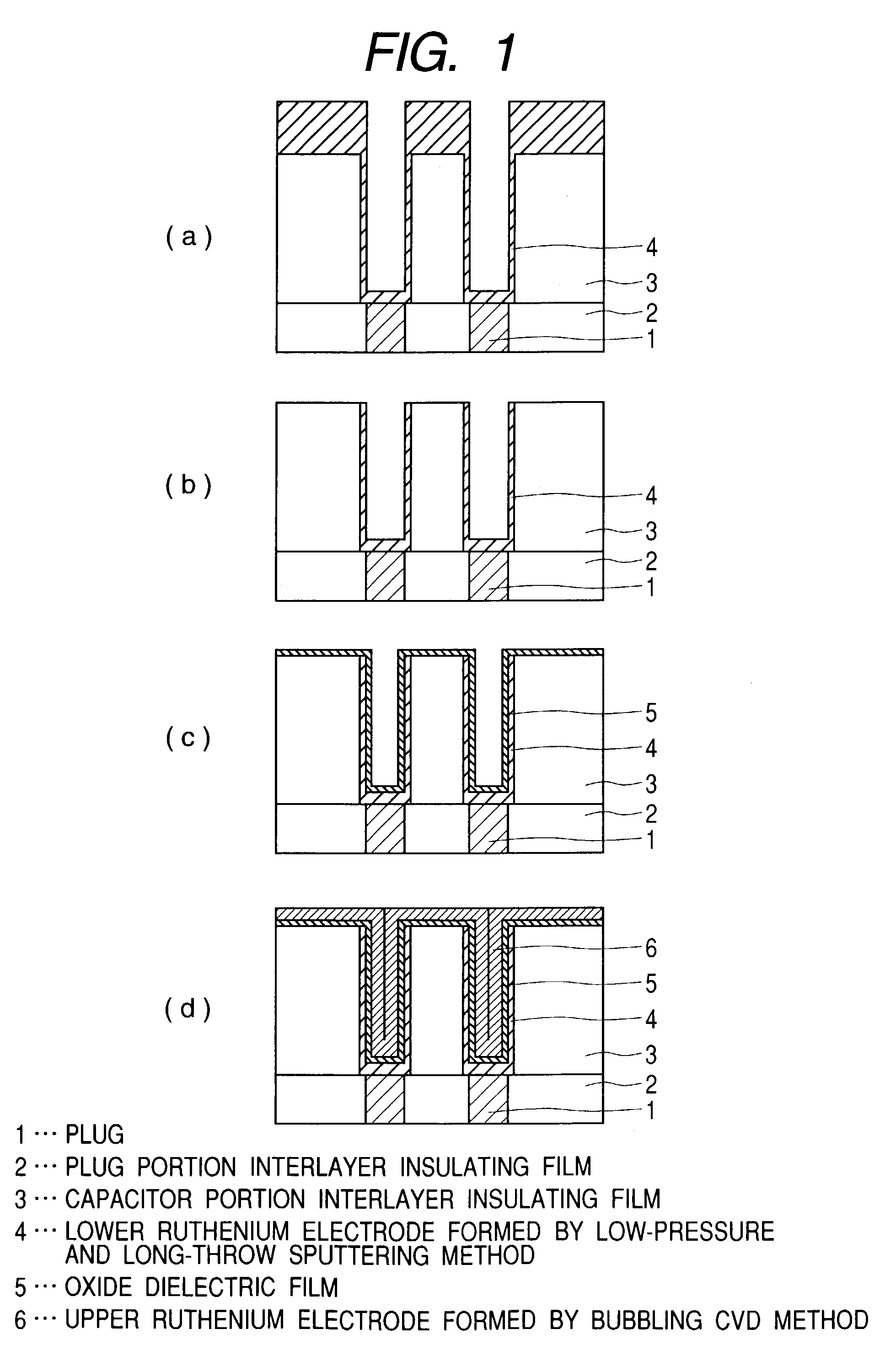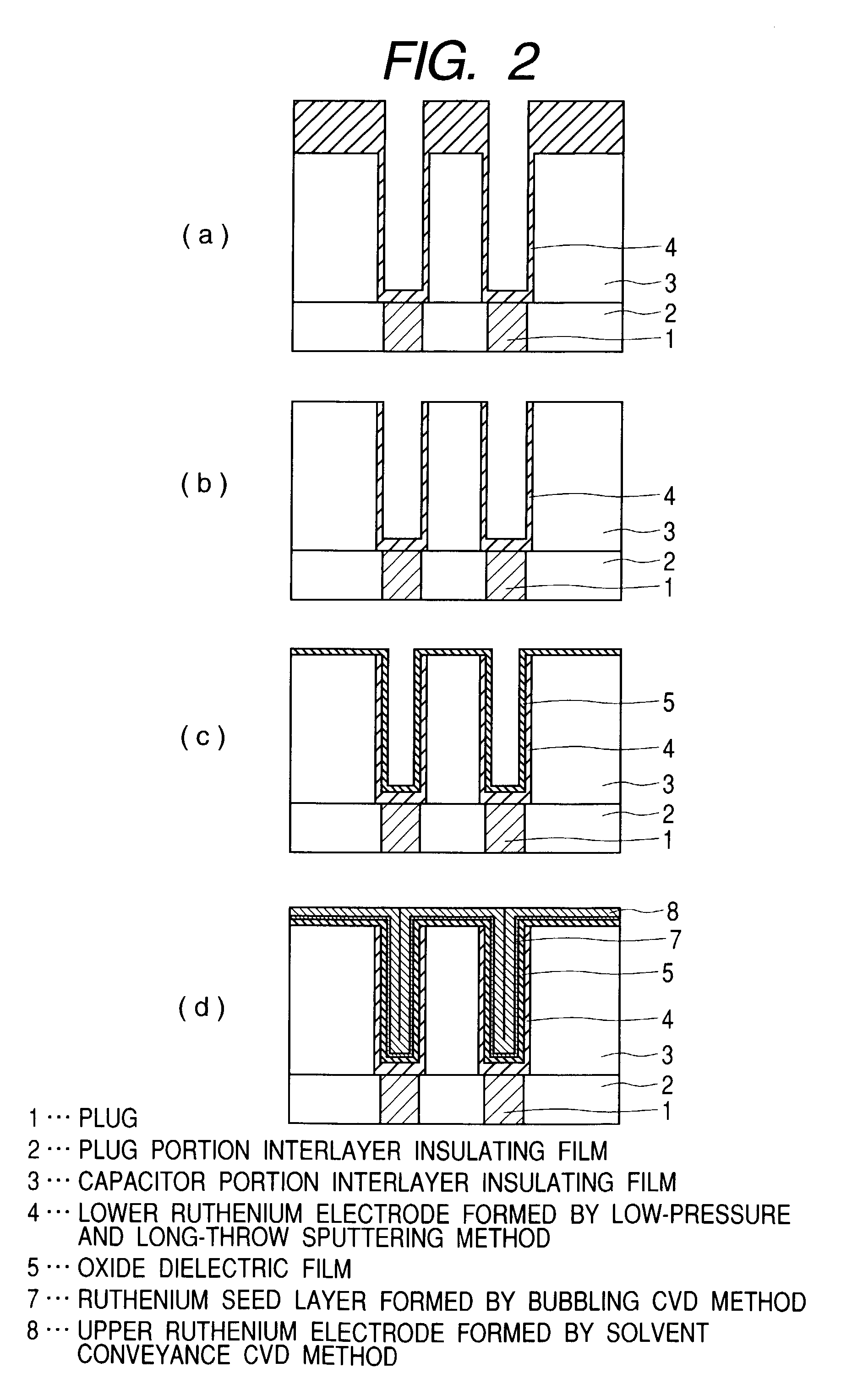Method for manufacturing a ruthenium film for a semiconductor device
- Summary
- Abstract
- Description
- Claims
- Application Information
AI Technical Summary
Benefits of technology
Problems solved by technology
Method used
Image
Examples
embodiment 1
[0059]Embodiment 1 according to this invention is to be described with reference to FIG. 1. In this embodiment, a lower ruthenium electrode is formed by low-pressure and long-throw sputtering and an upper ruthenium electrode is formed by chemical vapor deposition of conveying a starting material.
[0060]At first, on plugs 1 comprising titanium nitride and a plug portion interlayer insulating film 2 comprising SiO2, a capacitor portion interlayer insulating film 3 of 700 nm thickness comprising SiO2 was deposited by plasma CVD using a mono-silane gas as a starting material.
[0061]Then, resist was coated and developed by well-known photolithography and the capacitor portion interlayer insulating film 3 was fabricated by dry etching as far as the surface of the plug 1 using the resist as a mask. The fabrication was applied such that the opening had an elliptic cylindrical shape, and the opening is utilized as a lower electrode.
[0062]After removing the resist, a lower ruthenium electrode 4...
embodiment 2
[0073]Embodiment 2 according to this invention is to be described with reference to FIG. 2. In this embodiment, a lower ruthenium electrode is formed by low-pressure and long-throw sputtering, forming a ruthenium seed layer by chemical vapor deposition of conveying the starting material and then an upper ruthenium electrode is formed by chemical vapor deposition of conveying a starting material dissolved in a solvent.
[0074]At first, a capacitor portion interlayer insulating film 3 of 700 nm thickness comprising SiO2 was deposited on plugs 1 comprising titanium nitride and a plug portion interlayer insulating film 2 comprising SiO2 by plasma CVD using a mono-silane gas as the starting material.
[0075]Then, a resist was coated and developed by well-known photolithography, and a capacitor portion interlayer insulating film 3 was fabricated as far as the surface of the plugs 1 by dry etching using the resist as a mask. The fabrication was made such that the opening has an elliptic cylind...
embodiment 3
[0089]Embodiment 3 of this invention is to be described with reference to FIG. 3. This embodiment is adapted for forming a ruthenium seed layer by low-pressure and long-throw sputtering, and then forming a lower ruthenium electrode by chemical vapor deposition of conveying the starting material dissolved in a solvent, forming an upper ruthenium electrode by chemical vapor deposition of conveying the starting material.
[0090]At first, on plugs 1 comprising titanium nitride and a plug portion interlayer insulating film 2 comprising SiO2, a capacitor portion interlayer insulating film 3 of 700 nm thickness comprising SiO2 was deposited by a plasma CVD method using a mono-silane gas as a starting material.
[0091]Subsequently, resist was coated and developed by well-known photolithography and the capacitor portion interlayer insulating film 3 was fabricated as far as the surf ace of the plugs 1 by dry etching using the resist as a mask. Fabrication was conducted such that the opening had a...
PUM
| Property | Measurement | Unit |
|---|---|---|
| Temperature | aaaaa | aaaaa |
| Temperature | aaaaa | aaaaa |
| Temperature | aaaaa | aaaaa |
Abstract
Description
Claims
Application Information
 Login to View More
Login to View More - R&D
- Intellectual Property
- Life Sciences
- Materials
- Tech Scout
- Unparalleled Data Quality
- Higher Quality Content
- 60% Fewer Hallucinations
Browse by: Latest US Patents, China's latest patents, Technical Efficacy Thesaurus, Application Domain, Technology Topic, Popular Technical Reports.
© 2025 PatSnap. All rights reserved.Legal|Privacy policy|Modern Slavery Act Transparency Statement|Sitemap|About US| Contact US: help@patsnap.com



